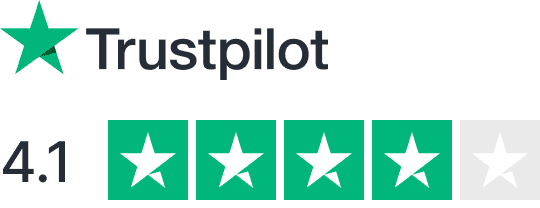HIPAA compliance is crucial, especially when working with LATAM talent. Here’s why and how you can manage it effectively:
- Healthcare breaches cost $10.1M each on average (2023), with 59% linked to third-party vendors.
- LATAM talent saves costs: A medical assistant in Mexico earns ~$747/month vs. $3,289 in the U.S.
- Risks to address: Different security standards, infrastructure gaps, cultural differences, and varying data laws.
Key Steps to Stay Compliant:
- Secure Systems: Use encryption, VPNs, MFA, and HIPAA-ready tools like Tresorit or TigerConnect.
- Train Teams: Provide HIPAA training on privacy, security, and breach protocols.
- Monitor Continuously: Use tools like Scytale or TrueVault for compliance tracking and regular audits.
- Set Clear Policies: Role-based access, secure communication, and strict data handling rules.
Why it matters: Healthcare records are 25x more valuable than credit card data, and compliance failures can result in fines up to $68,928 per incident.
Read on for detailed strategies to integrate LATAM professionals securely while meeting HIPAA standards.
HIPAA Training 101: The Four Rules of HIPAA Compliance
HIPAA Compliance Risks with Remote Teams
Bringing LATAM talent into your remote workforce comes with unique HIPAA compliance challenges that require careful planning. With 36.2 million Americans expected to work remotely by 2025, healthcare organizations must address these risks head-on. This is particularly important given that 34% of healthcare data breaches involve unauthorized access or disclosure of PHI.
HIPAA Rules for Remote Work
Remote workers are held to the same HIPAA standards as on-site employees. To ensure compliance in a remote setup, organizations should focus on:
- Using secure networks, like VPNs, for accessing sensitive data.
- Setting up password-protected wireless routers.
- Implementing physical safeguards for home offices.
- Encrypting all data transmissions.
- Requiring multi-factor authentication (MFA).
Once these basics are in place, it’s crucial to assess risks unique to LATAM operations.
Risk Factors in LATAM Operations
The healthcare industry is particularly exposed to compliance risks when expanding into LATAM. Here are some key concerns:
| Risk Factor | Impact | Mitigation Strategy |
|---|---|---|
| Different Security Standards | Higher chances of data breaches | Apply US-level security protocols |
| Infrastructure Gaps | Unstable network connectivity | Invest in reliable internet solutions |
| Cultural Differences | Miscommunication in security practices | Offer tailored training programs |
| Varying Data Protection Laws | Conflicts with HIPAA requirements | Define clear data management policies |
Major Compliance Mistakes
Many organizations stumble when managing HIPAA compliance with LATAM teams. The Office for Civil Rights processes over 60,000 data breach notifications annually, and many of these result from avoidable errors. Common pitfalls include:
- Inadequate Training Programs
A lack of thorough training often leads to preventable security issues and compliance breaches. - Insufficient Technical Safeguards
The problem often lies in the systems provided to remote workers, not the workers themselves. - Poor Vendor Due Diligence
Many organizations skip detailed security evaluations of LATAM partners, which can lead to costly mistakes. Any company or partner handling ePHI of US citizens must comply with HIPAA regulations, as non-compliance can result in hefty fines and reputational damage.
To minimize these risks, healthcare organizations should establish strict protocols, conduct regular security audits, and enforce strong data protection measures. This includes practical steps like using privacy screens, securing home offices with locks, and ensuring all remote workers connect through secure networks.
Setting Up Secure Remote Systems
With data breaches costing an average of $10.1 million in 2023, ensuring secure systems is a must – especially for remote LATAM operations. Here’s how to establish a HIPAA-compliant setup to safeguard sensitive information.
Data Encryption and VPN Setup
To protect Protected Health Information (PHI), encryption is non-negotiable. Use these guidelines from NIST:
- Data at rest: Follow NIST SP 800-111 standards.
- Data in transit: Implement protocols from NIST SP 800-52.
For VPNs, ensure these features are in place:
| Security Feature | Implementation Requirement | Purpose |
|---|---|---|
| End-to-end Encryption | AES-256 bit minimum | Keeps data encrypted from start to finish |
| Multi-factor Authentication | Time-based OTP or biometric | Adds a layer of security beyond passwords |
| IP Filtering | Whitelist approved locations | Limits access to specific regions |
| Kill Switch | Automatic connection termination | Prevents data leaks if the VPN disconnects |
HIPAA-Ready Software Tools
Consider these trusted tools for secure operations:
- Tresorit ($19/user/month): Provides encrypted storage with detailed audit logs and advanced access controls.
- TigerConnect ($10/user/month): Ensures secure clinical communication with role-based access and encrypted messaging.
- Imprivata: Offers enterprise-level access management with single sign-on features.
Access Control Systems
Poor access control can lead to costly penalties, as shown by the University of Rochester Medical Center’s $3 million HIPAA settlement. Here’s how to implement effective systems:
1. User Authentication
Require unique credentials for every team member. Password policies should include:
- At least 12 characters.
- A mix of uppercase, lowercase, numbers, and symbols.
- Regular updates every 90 days.
- Account lockout after 3 failed login attempts.
2. Role-Based Access
Limit access based on job responsibilities:
- Level 1: View-only permissions for non-sensitive data.
- Level 2: Restricted PHI access for specific tasks.
- Level 3: Full system access for administrators.
- Emergency access protocols with documented approvals.
3. Activity Monitoring
Track and log all data interactions with automated tools:
- Real-time activity tracking.
- Alerts for suspicious actions.
- Weekly access review reports.
- Logs retained for at least 90 days.
sbb-itb-a3fbb4e
HIPAA Training for LATAM Teams
Verizon reports that 80% of data breaches in healthcare involve human error. This makes HIPAA training for LATAM teams essential to staying compliant. Here’s how to create a training program that respects cultural differences while meeting regulatory standards.
HIPAA Training Requirements
Every team member must understand how to protect Protected Health Information (PHI). Key areas to focus on include:
| Training Component | Key Topics Covered | Frequency |
|---|---|---|
| Privacy Rule | PHI handling, patient rights, breach reporting | Initial training and annually |
| Security Rule | Password management, device security, threat detection | Regular updates (e.g., quarterly) |
| Breach Notification | Incident response, reporting procedures, documentation | Semi-annual review |
"Great training isn’t about teaching. The goal is to make people understand, care, and remember. Great training is made with genuine passion – to make people love training, it must be made with love. Excellent substance is essential. The material must be explained clearly, understandably, and concretely. The content must be short and to the point – and it must be engaging."
Develop a schedule to reinforce these principles effectively.
Security Training Schedule
New LATAM team members should complete HIPAA training within their first week. Here’s a suggested breakdown:
- 4-hour course on privacy fundamentals
- 2-hour session on security awareness
- Role-specific compliance modules tailored to individual responsibilities
Ongoing training is equally important:
- Monthly security updates and quarterly phishing simulations
- Semi-annual compliance reviews
- Annual certification renewals
This structured approach builds a strong foundation for managing PHI effectively.
Data Handling Rules
To maintain HIPAA compliance, establish clear protocols that balance cultural sensitivities with strict regulatory standards:
Documentation Requirements
- Generate weekly audit reports to ensure compliance
- Submit incident reports within 24 hours of an event
Access Controls
- Require two-factor authentication for all PHI access
- Conduct monthly reviews of role-based permissions
- Enforce 15-minute session timeouts
- Prohibit the use of personal devices for accessing PHI
Communication Guidelines
- Use encrypted channels for PHI discussions
- Avoid using messaging apps for PHI-related communications
- Rely on secure file transfer protocols for sharing sensitive data
- Obtain written confirmation for verbal PHI requests
These practices align with the HIPAA Security Rule, which mandates: "Implement a security awareness and training program for all members of its workforce (including management)". Following these guidelines ensures HIPAA compliance, even in remote LATAM operations.
Remote Compliance Monitoring
Keep LATAM remote teams aligned with HIPAA standards by using automated systems to monitor compliance. This approach helps minimize incidents and ensures regulations are consistently upheld.
Compliance Tracking Tools
HIPAA compliance demands advanced tools for effective monitoring. Below are some top options proven to work in real scenarios:
| Tool | Primary Function | Key Features |
|---|---|---|
| Scytale | All-in-one compliance | Automated evidence collection, multi-framework support |
| TrueVault | Secure cloud storage | Real-time monitoring, automated backups |
| LuxSci | Secure communication | Customizable security, detailed audit trails |
| Paubox | Email security | Zero-step encryption, access logging |
When selecting tools, focus on features like:
- Automated risk assessments
- Digital reporting
- Continuous monitoring
- Policy management
- Employee activity tracking
After implementing these tools, conduct regular audits to ensure systems remain effective.
Security Audit Process
Review IT systems thoroughly to document how PHI (Protected Health Information) is handled and accessed.
Key Steps for Audits:
1. System Assessment
Perform monthly vulnerability scans and quarterly penetration tests on systems handling PHI. Ensure role-based access control (RBAC) and verify compliance with multi-factor authentication (MFA).
2. Documentation Review
Check access logs and user permissions every two weeks. Keep detailed records of system changes and updates to security protocols.
3. Compliance Verification
Every quarter, review critical security measures such as:
- Firewall settings
- Encryption methods
- Access control systems
- Data backup procedures
A solid audit process ensures your compliance framework stays robust.
Security Incident Response
"This is particularly relevant for organizations that allow remote access to EPHI (Electronic Protected Health Information) through portable devices or on external systems or hardware not owned or managed by the covered entity".
Incident Response Protocol:
| Phase | Actions | Timeline |
|---|---|---|
| Detection | Monitor alerts, assess threat level | Immediate |
| Containment | Isolate affected systems, secure PHI | Within 1 hour |
| Investigation | Document details, determine scope | Within 24 hours |
| Notification | Alert parties, file reports | Within 48 hours |
| Resolution | Fix issues, update security | Within 72 hours |
Make sure your incident response team is available 24/7 to handle breaches quickly, especially with LATAM’s varying time zones.
Keep in mind, HIPAA violations carry steep penalties, ranging from $137 to $68,928 per violation.
Maintaining HIPAA Compliance
Building Security Habits
Maintaining HIPAA compliance requires consistent and effective security habits, especially when working with remote LATAM teams. It’s crucial to establish daily routines that protect sensitive information.
Key Security Practices:
| Practice | Implementation | Verification |
|---|---|---|
| Password Updates | Update passwords monthly | Enforce automatically |
| Access Reviews | Check permissions bi-weekly | Use digital audit logs |
| Security Drills | Conduct breach simulations quarterly | Track performance metrics |
| Data Handling | Perform daily encryption checks | Monitor systems |
Keep detailed records of all security activities in a centralized system to ensure accountability. While these practices help secure your operations, staying informed about regulatory updates is just as important.
HIPAA Rule Updates
Integrate updates to HIPAA rules into your existing security monitoring and training efforts to maintain compliance.
Update Management Process:
1. Monitor Changes
Stay informed by tracking updates on the HHS website and using trusted compliance services. Automate alerts to ensure you’re notified of new regulations.
2. Assessment and Planning
Evaluate how updates affect your current processes. Develop clear implementation plans with set timelines and assign responsibilities to team members.
3. Team Communication
Keep your team informed using multiple communication methods:
- Monthly compliance newsletters
- Quarterly training sessions
- Immediate alerts for critical changes
These updates naturally align with your existing security practices and help your remote teams adjust to evolving regulatory requirements.
Managed Compliance Services
For organizations with LATAM teams, professional compliance services can simplify the process. Companies like CareMinds offer staff augmentation with built-in compliance oversight.
Service Features:
- Pre-screened developers trained in security protocols
- Continuous compliance monitoring
- Integrated HR and administrative support
- Risk-free trial periods for new hires
CareMinds accepts only the top 1% of candidates through a rigorous vetting process, ensuring high security standards. Using expert services can help you navigate regional challenges while maintaining compliance.
Implementation Timeline:
| Phase | Duration | Activities |
|---|---|---|
| Onboarding | 2 weeks | Team matching, security setup, training |
| Monitoring | Ongoing | Daily security checks and updates |
| Review | Quarterly | Full compliance audits |
Wrapping Up HIPAA Compliance with LATAM Talent
Handling HIPAA compliance while working with LATAM talent demands strong security practices, consistent training, and vigilant monitoring. The high costs of data breaches make it clear: compliance is non-negotiable.
Key Steps to Implement:
- Secure Your Systems: Use multi-layered security measures like encryption, VPNs, and MFA. Pre-vetted talent can help streamline compliance efforts.
- Focus on Training: Schedule monthly HIPAA basics training, bi-weekly updates on security protocols, and quarterly breach response drills.
- Continuous Monitoring: In 2023, healthcare data breaches impacted 116 million individuals. Regular system checks are essential to stay ahead of threats.
"The HIPAA Security Rule is based on the fundamental concepts of flexibility, scalability, and technology neutrality".
These actions create a well-rounded approach, combining security, training, and monitoring to ensure compliance across LATAM teams.
Key Factors for Success:
- Keep patient data securely stored within U.S. borders.
- Use role-based access controls to limit data exposure.
- Maintain thorough documentation of compliance efforts.
- Have clear, actionable incident response plans in place.
- Regularly assess and update your security measures.
















